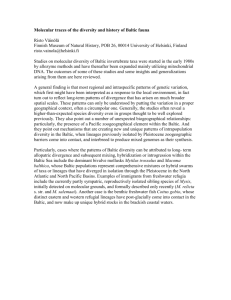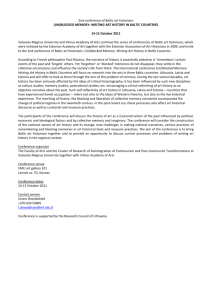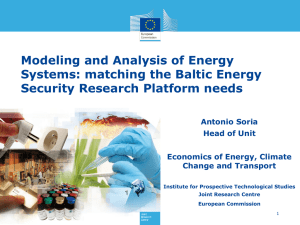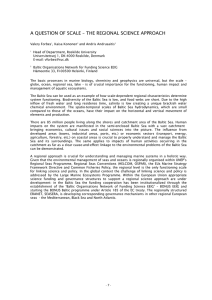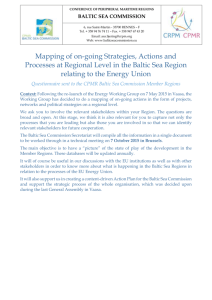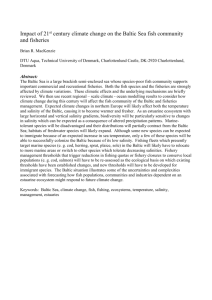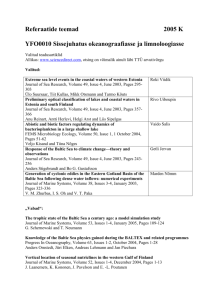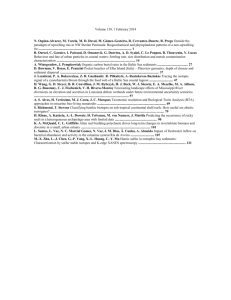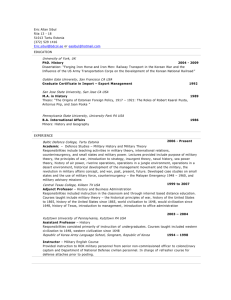Abstract_MSD2014-WESTERLUNDantti
advertisement
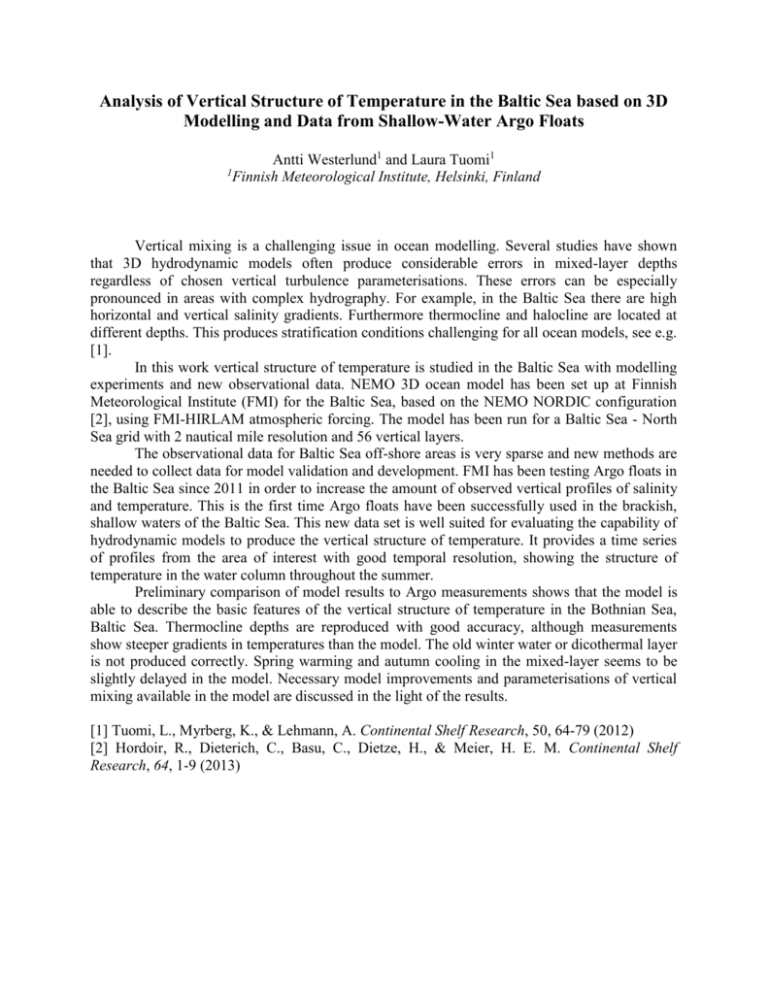
Analysis of Vertical Structure of Temperature in the Baltic Sea based on 3D Modelling and Data from Shallow-Water Argo Floats Antti Westerlund1 and Laura Tuomi1 1 Finnish Meteorological Institute, Helsinki, Finland Vertical mixing is a challenging issue in ocean modelling. Several studies have shown that 3D hydrodynamic models often produce considerable errors in mixed-layer depths regardless of chosen vertical turbulence parameterisations. These errors can be especially pronounced in areas with complex hydrography. For example, in the Baltic Sea there are high horizontal and vertical salinity gradients. Furthermore thermocline and halocline are located at different depths. This produces stratification conditions challenging for all ocean models, see e.g. [1]. In this work vertical structure of temperature is studied in the Baltic Sea with modelling experiments and new observational data. NEMO 3D ocean model has been set up at Finnish Meteorological Institute (FMI) for the Baltic Sea, based on the NEMO NORDIC configuration [2], using FMI-HIRLAM atmospheric forcing. The model has been run for a Baltic Sea - North Sea grid with 2 nautical mile resolution and 56 vertical layers. The observational data for Baltic Sea off-shore areas is very sparse and new methods are needed to collect data for model validation and development. FMI has been testing Argo floats in the Baltic Sea since 2011 in order to increase the amount of observed vertical profiles of salinity and temperature. This is the first time Argo floats have been successfully used in the brackish, shallow waters of the Baltic Sea. This new data set is well suited for evaluating the capability of hydrodynamic models to produce the vertical structure of temperature. It provides a time series of profiles from the area of interest with good temporal resolution, showing the structure of temperature in the water column throughout the summer. Preliminary comparison of model results to Argo measurements shows that the model is able to describe the basic features of the vertical structure of temperature in the Bothnian Sea, Baltic Sea. Thermocline depths are reproduced with good accuracy, although measurements show steeper gradients in temperatures than the model. The old winter water or dicothermal layer is not produced correctly. Spring warming and autumn cooling in the mixed-layer seems to be slightly delayed in the model. Necessary model improvements and parameterisations of vertical mixing available in the model are discussed in the light of the results. [1] Tuomi, L., Myrberg, K., & Lehmann, A. Continental Shelf Research, 50, 64-79 (2012) [2] Hordoir, R., Dieterich, C., Basu, C., Dietze, H., & Meier, H. E. M. Continental Shelf Research, 64, 1-9 (2013)
